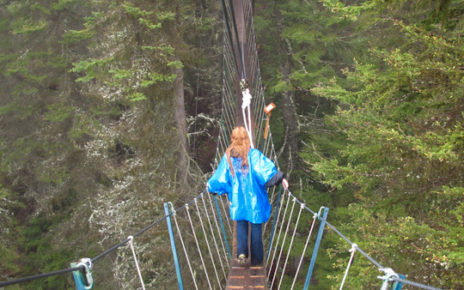The following is a guest post from Olga Garcia, seasoned round-the-world backpacker and expat. Currently she is the Social Media Community Manager for Going Global, a leading provider of country-specific career and employment resources for individuals interested in working outside of their home country. She runs a blog called Goinglobal where she helps young people achieve their international dreams.

For the past three weeks, I have been traveling in one of the most beautiful countries in the world. Shrouded by myth and mystery, Colombia offers its people and travelers an astounding amount of cultural and natural diversity and contrast, where climate, topography, wildlife, music, fruits, foods and architecture change within hours of overland travel. Decades of political instability and guerilla insurgencies cloud Colombia’s overabundance of beauty and culture. Their history of violence, drug trafficking and questionable safety has been the largest deterrents for travelers to visit this amazing country.
When I traveled to Colombia as a young girl, it was very important for me to be aware of the precautions necessary to be safe in this magnificent country. This was a huge contrast from the life that I lived at home, in the comfort of a more developed and less volatile nation. As my travels extended beyond South America, my experiences in Colombia gave me the foundation for being a safer traveler. After college when I decided to circumnavigate the world for a year, those lessons helped me have a happy and safe trip.
During these past three weeks in Colombia, I have had to call upon those experiences once again to be a carefree yet cautious traveler. What I have learned throughout my travels and experience living abroad is that safety precautions are the same in every country, regardless of what the media may say about the volatility of any country. I have seen people robbed in broad daylight in the streets of Barcelona, Amsterdam and Rome. Traveling to Colombia was my safety ‘bootcamp.’ Here are the lessons and tips I have learned.
1. Use your poker face
Lady Gaga has it right. Don’t let anyone read your face while traveling. When you go out during the day, and more importantly at night, make sure that your face doesn’t show the signs of you being a tourist. Keep your posture straight, head up and look forward. Avoid bringing your brows together as if you were confused and lost. Granted, you might be, but while you’re walking about in foreign areas pretend like you belong there. If you need help, stop in a shop and discretely ask for help.
2. Seek out local advice
Being engulfed in the local culture of a country always gave me the most memorable experiences. Throughout my year abroad, I sought out local advice on where to go and where not to go. This made my trip both spontaneous and safer. Why? Locals have a better grasp on the safe areas for foreigners. Sometimes these areas may encompass the touristy spots (although you need to be careful with your belongings there) and the roads less traveled. If you are staying at a hotel or hostel, ask the staff for their recommendations. The guests are also an excellent source of destinations that are fun and safe.
3. Dress like the locals
After all those days of hitting the gym before your trip, the first thing you want to do when you travel is show off. It is important to always look nice, but going overboard is what separates you as a foreigner. Don’t wear outlandish clothing or fancy jewelry. The goal is to not bring too much attention to yourself. That being said, day and night dress attire were not created equally. During the day, dress like you would at home. At night, when party time is in the air, try not to over do it. Before you leave, do some picture research on Flickr or Matador Network to see how people dress where you are visiting.
4. Tell people where you are going
Depending on the length of your trip, a strict itinerary may be out of the question. However, as long as someone knows the general vicinity of where you are, you increase the chances of being a safe traveler. Who should that someone be? A fellow traveler, the staff at the hostel or hotel, your parents, siblings or anyone who could vouch for you in case of an emergency.
5. Avoid carrying large amounts of cash
When I travel, I opt to carry my HSBC debit card and only pay cash when necessary. My card is easy to cancel and any erroneous charges can be rectified immediately. By carrying large amounts of cash, you run the risk of it being stolen without the guarantee of being reimbursed. Avoid putting your cash in places where it can be easily accessed (i.e. pant pockets).
6. Don’t accept things from strangers
Remember when your parents told you not to talk to strangers? You don’t have to go to that extreme when you’re traveling. But be wary of accepting gifts, money or anything free from strangers. The best thing to do is to politely decline.
7. Trust your gut instincts
Sometimes you know certain situations just don’t feel ‘right.’ In the book Blink by Malcom Gladwell, he argues that our subconscious mind works faster than our conscious mind, thereby enabling us to sense danger, fear, and opportunity in a blink of an eye. While you are traveling, make sure to pay attention to those feelings; they may keep you from getting into a sticky situation. Trust me, I have been there!
These 7 golden rules have taken me around the world to over 20 countries. The countries I visit vary from developed to less developed nations. Safety, however, remains the same regardless of their status in the economic world order. Use these 7 tips as the foundation blocks for your safe travels. As with any tips, these are not strict rule, but merely guidelines.



